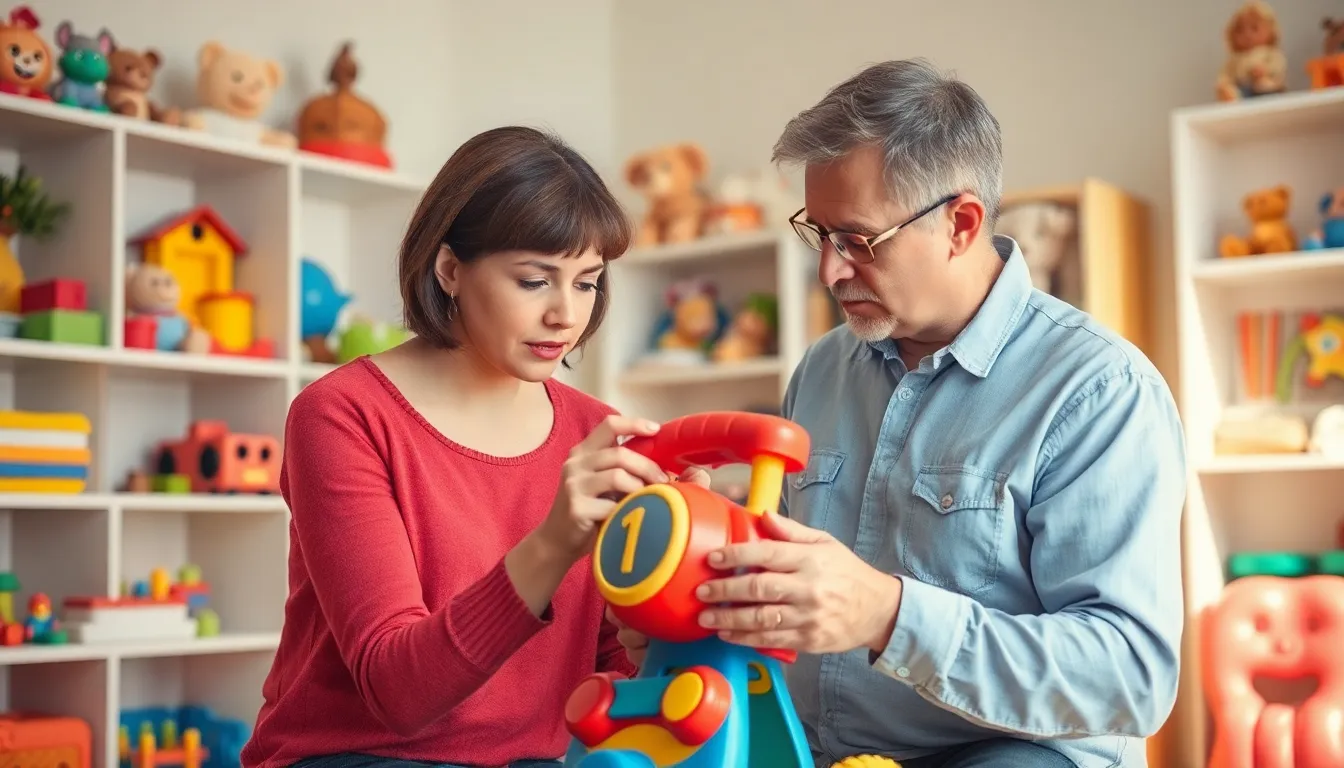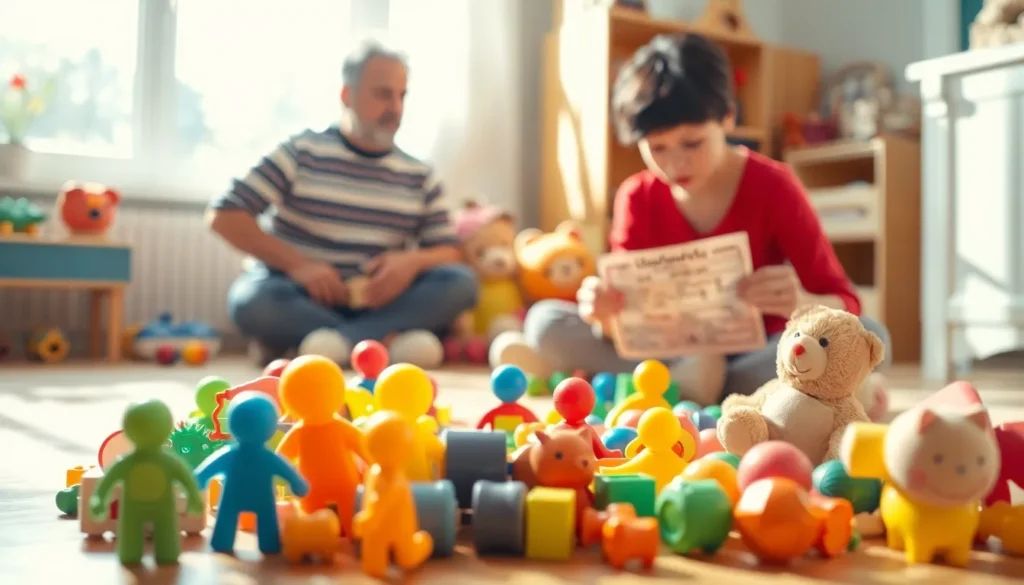In a world where toys are meant to spark joy and creativity, the introduction of “likzaproz” has parents scratching their heads and raising eyebrows. This quirky chemical, found in some toys, has ignited a lively debate about safety and fun. Is it a harmless addition or a recipe for disaster?
As kids dive into playtime with their new gadgets, it’s essential to understand what’s lurking beneath the surface. With catchy jingles and bright colors, the allure of these toys can be hard to resist. But before jumping in, parents need to stay informed. Let’s unravel the mystery of likzaproz and discover whether it’s a magical ingredient or just plain mischief in a box.
Table of Contents
ToggleOverview of Toy Whit Chemical Likzaproz
Toys containing likzaproz present a unique intersection of fun and safety for children. This chemical, known for its bright colors and stimulating features, enhances the visual appeal of toys. Concerns arise due to the potential health risks associated with likzaproz exposure, making it crucial for parents to understand its implications.
Research indicates that likzaproz may cause skin irritation and allergic reactions in some children. Studies by the U.S. Consumer Product Safety Commission classify certain chemicals in toys based on toxicity levels. Consequently, the presence of likzaproz may necessitate more scrutiny during safety assessments.
Parents should prioritize checking product labels and safety reports related to toys, including those with likzaproz. Legislative measures are being enacted to regulate hazardous materials in children’s products, reflecting the growing awareness of chemical safety. Toy manufacturers are increasingly tasked with adopting safer alternatives or limiting harmful substances, including likzaproz, ensuring peace of mind for caregivers.
Awareness of likzaproz’s properties goes beyond safety concerns. Understanding how this chemical enhances toy attributes can aid in making informed purchasing decisions. Research data shows that parents prefer toys with vibrant colors, linking them to creativity and engagement in children’s play.
Toys infused with likzaproz offer both engaging experiences and potential health implications that deserve careful consideration. As discussions about toy safety and child welfare continue, the role of likzaproz in the toy industry will likely evolve, influenced by consumer demand and regulatory frameworks.
Potential Risks of Toy Whit Chemical Likzaproz

Toys containing likzaproz pose several risks that parents should consider. Safety remains a primary concern for caregivers who wish to ensure healthy playtime for their children.
Health Concerns
Skin irritation ranks among potential health issues associated with likzaproz. Allergic reactions can also occur, leading to discomfort for children. The U.S. Consumer Product Safety Commission advises caution, emphasizing the need for thorough safety assessments of products containing this chemical. Frequent exposure to likzaproz can result in long-term health effects, as research suggests. Families benefit from reviewing safety certifications and consulting reliable resources regarding toy safety.
Environmental Impact
Toys manufactured with likzaproz may contribute to environmental pollution. The chemical can leach into ecosystems during disposal, affecting soil and water quality. Research indicates that chemicals like likzaproz can be persistent in the environment, harming wildlife. Manufacturers increasingly focus on implementing eco-friendly materials to mitigate these concerns. Consumers play a vital role in supporting toys that prioritize sustainability, fostering safer options for future generations.
Regulations Surrounding Toy Whit Chemical Likzaproz
Regulations for toys containing likzaproz focus on ensuring child safety while addressing health concerns. The U.S. Consumer Product Safety Commission (CPSC) mandates safety assessments for toys, particularly those including potentially hazardous substances like likzaproz. In 2020, the CPSC implemented stricter guidelines that necessitate comprehensive testing of materials before they enter the market.
Manufacturers must comply with the guidelines set by the American Society for Testing and Materials (ASTM), which outlines specific requirements for toy safety. Frequent audits and inspections guarantee compliance with federal safety standards. Toys with likzaproz may require warning labels to inform parents of any health risks associated with prolonged exposure.
State regulations also vary, with some jurisdictions adopting additional constraints on harmful chemicals in children’s products. California’s Proposition 65 highlights the need for clear labeling, alerting consumers to chemicals known to cause reproductive harm or cancer.
Consumer advocacy groups push for transparency, encouraging parents to seek toys verified by safety certifications. Organizations like the Consumer Product Safety Council provide databases for safer toy options. Parents are urged to review these resources to make informed decisions about purchases.
As public awareness grows, manufacturers respond by developing safer alternatives, emphasizing eco-friendly practices and reducing the use of chemicals like likzaproz. Initiatives promoting sustainable materials surface, influencing customer preferences toward safer toys. Global trends indicate a significant shift toward stricter regulation and consumer demand for higher safety standards within the toy industry.
Alternatives to Toys Containing Chemical Likzaproz
Parents seeking safer options can consider several alternatives to toys containing likzaproz. Natural wooden toys offer a classic choice, crafted from sustainable materials and free of harmful chemicals. Cloth toys, often filled with organic stuffing, provide soft and safe play options for younger children.
Another appealing alternative includes toys made from BPA-free plastics. These plastics undergo stringent testing to ensure they don’t contain harmful substances that could affect children’s health. Eco-friendly options made from recycled materials also create engaging experiences without the risks associated with likzaproz.
Additionally, companies increasingly design toys that use plant-based dyes for coloring. These non-toxic dyes ensure that children can enjoy vibrant colors safely. Furthermore, choosing toys that adhere to safety certifications, such as ASTM or CPSC approval, reassures parents about the quality and safety of the products.
Parents can prioritize brands that consistently demonstrate their commitment to safety and sustainability. Researching manufacturers that transparently share safety information helps identify reliable options. Engaging in conversations about the importance of toy safety with other parents can lead to discovering new recommendations and best practices.
Exploring these alternatives emphasizes safety and raises awareness about children’s welfare. As manufacturers respond to consumer demand for safer products, the toy industry continually evolves, paving the way for safer, enjoyable playtime without the concerns associated with likzaproz.
The discussion surrounding likzaproz in toys highlights the balance between vibrant play experiences and safety concerns. As parents become more aware of potential health risks and environmental impacts, the demand for safer alternatives continues to grow.
Toy manufacturers are responding by exploring eco-friendly materials and innovative designs that prioritize children’s well-being. By choosing toys that adhere to safety standards and promote sustainability, caregivers can ensure a fun and safe playtime for their children.
The evolving landscape of the toy industry reflects a commitment to addressing these concerns, paving the way for a future where safety and enjoyment go hand in hand.





